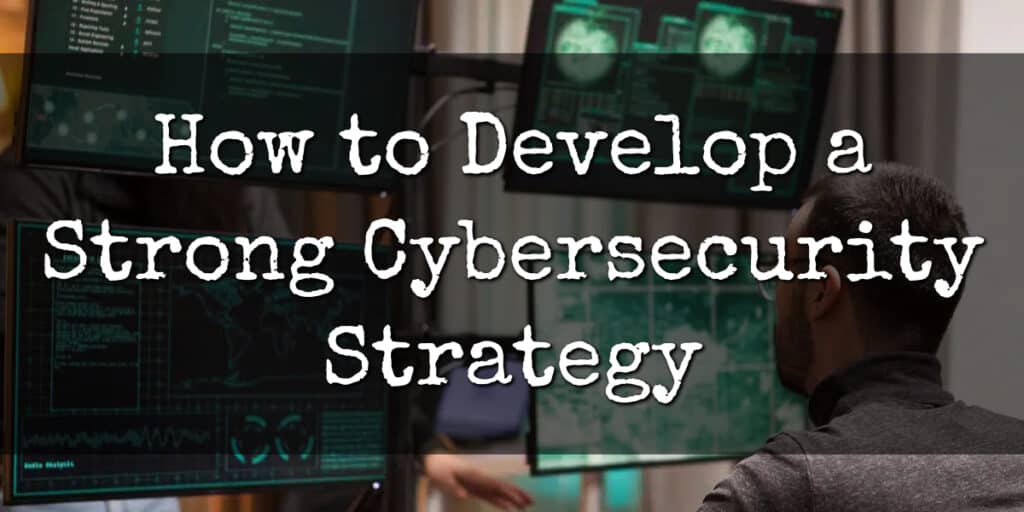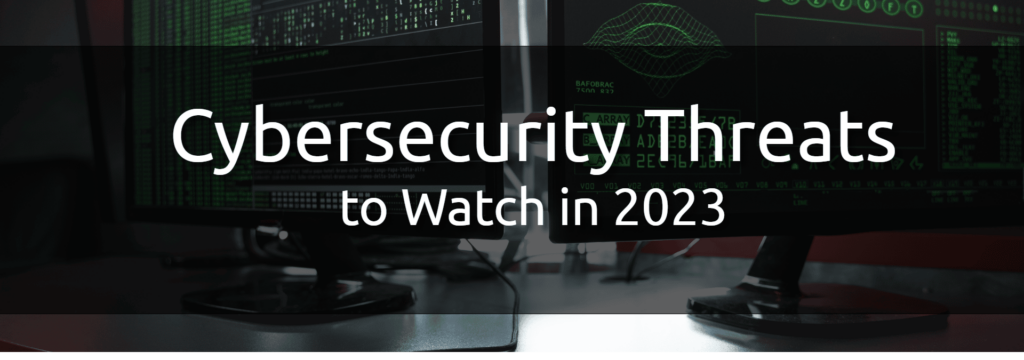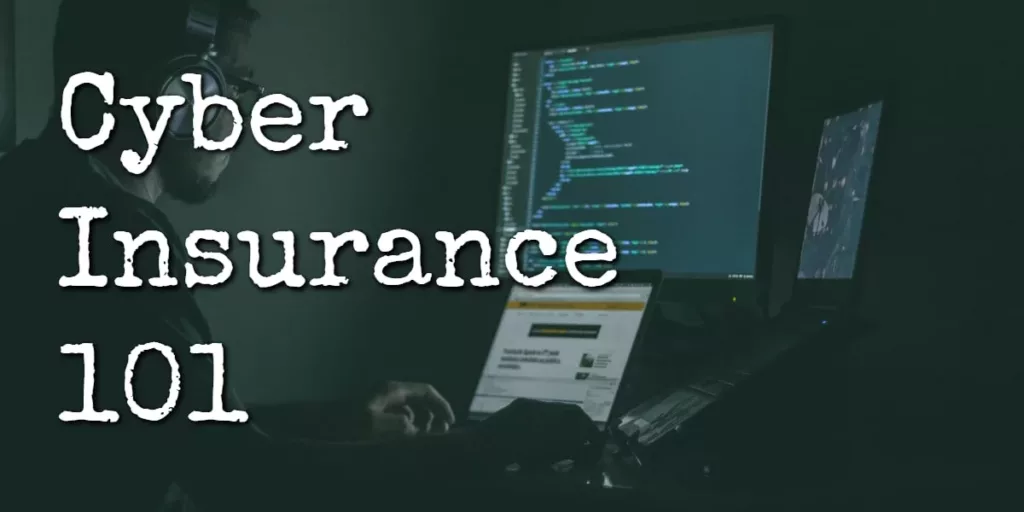Organizations need to be more vigilant than ever in today’s digital world. Cyber threats are constantly evolving, and a strong cybersecurity strategy is essential for protecting your valuable digital assets.
In this article, we’ll guide you through the process of how to plan and develop a strong cybersecurity strategy that addresses your organization’s unique needs and stays ahead of emerging threats.
On This Page:
- Understanding the Cyber Threat Landscape
- Aligning Cyber Security Goals with Business Objectives
- Choosing and Implementing a Cyber Security Framework
- Developing and Updating Security Policies
- Implementing Robust Security Controls
- Evaluating and Adjusting the Cyber Security Strategy
- Leveraging External Partners and Resources
- Summary
- Frequently Asked Questions
Short Summary
- Understand the cyber threat landscape & identify digital assets and associated risks.
- Stay informed on industry trends, prioritize resources & create alignment between security goals and business objectives.
- Implement robust security controls, review policies regularly & invest in employee training to stay ahead of emerging threats.
Understanding the Cyber Threat Landscape

Understanding the dynamic cyber threat landscape and employing proactive risk management is vital for crafting a robust cybersecurity strategy.
To begin tackling these challenges, it’s essential to keep track of your assets as part of a risk management plan. This includes assessing all aspects of your organization, from people to processes and technologies, to identify vulnerabilities and potential threats.
Identifying Key Digital Assets and Their Associated Risks
Identifying key digital assets and their risks lays the groundwork for an effective cybersecurity strategy, enabling prioritization of resources and identification of essential security measures.
In recent years, cyber-attacks have increasingly targeted small businesses, with 43% of attacks focusing on this sector. High-profile incidents like the SolarWinds and Colonial gas pipeline ransomware attacks have demonstrated how threat actors can exploit vulnerabilities to cause significant harm. In fact, a staggering 89% of healthcare organizations have experienced a data breach in the past two years.
By conducting regular risk assessments and evaluating your organization’s security maturity, you can stay ahead of these emerging threats and ensure a strong cybersecurity strategy.
Staying Informed on Industry Trends
Staying abreast of industry trends and emerging threats is vital for proactively managing cyber risks and keeping your cybersecurity measures relevant.
Some of the most significant cybersecurity trends include increasing privacy regulations for consumers, unifying cloud services and private applications, and a greater focus on ransomware prevention. By staying informed about these trends and incorporating them into your cybersecurity strategy, you can better protect your organization’s digital assets and maintain a strong security posture.
Aligning Cyber Security Goals with Business Objectives

For an effective security strategy, align your cybersecurity goals with your business objectives.
Defining Your Organization’s Risk Appetite and Prioritizing Resources
Defining your organization’s risk appetite and prioritizing resources is an essential step in creating a balanced cybersecurity strategy. Your risk appetite refers to the amount of risk your organization is willing to accept. By understanding your risk appetite, you can allocate resources effectively, ensuring that your security measures address both your security and business needs.
Focusing on quick wins can help build trust in your organization’s ability to handle more complex security issues.
Establishing Clear Roles and Responsibilities in Cyber Security
Establishing clear roles and responsibilities in cybersecurity is vital for ensuring that everyone in your organization understands their part in maintaining a strong security posture. This includes defining the roles and responsibilities for all employees, from the senior team to entry-level staff.
A well-defined cybersecurity plan should encompass all working procedures, people within and outside the organization, as well as devices connected to the corporate network.
Choosing and Implementing a Cyber Security Framework

Choosing and implementing a cybersecurity framework provides a structured approach to managing cyber risks and developing a comprehensive security strategy. This helps organizations identify the necessary security controls to monitor and evaluate their security posture continuously.
The first step in choosing a cybersecurity framework is to determine the legal requirements for your organization and conduct a thorough risk assessment to identify the most suitable framework for your unique security needs.
NIST, ISO 27001, and Other Key Cyber Security Frameworks
Some of the major cybersecurity frameworks include the NIST Cybersecurity Framework, ISO 27001, and PCI DSS. These frameworks offer guidelines and best practices for organizations to follow, ensuring a consistent and effective approach to cybersecurity.
The NIST Cybersecurity Framework has identified five major elements it focuses on:
- Identification
- Protection
- Detection
- Response
- Recovery
Each of these elements is crucial for an organization to protect its digital assets.
ISO 27001 is an internationally recognized standard in the field of cybersecurity, which requires organizations to demonstrate compliance with the PDCA (Plan-Do-Check-Act) Cycle.
Tailoring the Framework for Your Organization
Once you’ve selected a cybersecurity framework, it’s important to tailor it to your organization’s unique risks and requirements. This ensures that your cybersecurity strategy addresses your specific needs and allows you to allocate resources effectively.
To tailor a cybersecurity framework specifically for your organization, you can follow the NIST Cybersecurity Framework’s seven steps:
- Prioritize and scope
- Orient
- Create a current profile
- Conduct a risk assessment
- Create a target profile
- Determine, analyze, and prioritize gaps
- Implement an action plan
By customizing the framework to fit your organization’s needs, you can ensure a comprehensive and effective cybersecurity strategy.
Developing and Updating Security Policies

Developing and updating security policies is a critical aspect of maintaining a strong cybersecurity posture. These policies provide a blueprint for your cybersecurity management plan, setting expectations for internal stakeholders to protect business assets and reduce risk.
Regularly reviewing and updating your security policies ensures that they remain relevant and effective in addressing emerging threats and maintaining a secure environment.
Policy Review and Implementation
Regular policy review and implementation are essential for staying proactive in addressing cyber risks and ensuring that your security measures remain up to date. This involves:
- Conducting internal and external audits
- Performing tests and exercises to simulate various scenarios
- Evaluating the effectiveness of your existing security policies
By reviewing your policies and updating them as needed, you can ensure that your organization is well-equipped to handle the ever-changing cyber threat landscape. Involving all parties in the review process, such as employees, management, and external partners, can provide valuable input on your organization’s current cybersecurity strategy and help foster a culture of information security.
Employee Training and Awareness
Employee training and awareness programs are crucial for reinforcing security policies and promoting a culture of cybersecurity within your organization. By educating employees on the latest threats and best practices, you can empower them to recognize and respond to potential security incidents effectively.
Regular security awareness training should be an integral part of your cybersecurity strategy. This ensures that employees understand their roles and responsibilities in maintaining a secure environment and are equipped with the knowledge to recognize and prevent potential security breaches.
By investing in employee training and fostering a culture of security awareness, your organization can minimize the risk of cyber threats and maintain a strong cybersecurity posture.
Implementing Robust Security Controls

Implementing robust security controls, both technical and non-technical, is essential for protecting your digital assets and minimizing the risk of cyber attacks. These controls are measures put in place to reduce or eliminate identified risks, ensuring a strong security posture and safeguarding sensitive data.
Organizations should assess their security posture regularly and update their security controls as needed.
Technical and Non-Technical Measures
Technical and non-technical measures play a significant role in maintaining a strong security posture. Technical measures include hardware and software components like firewalls, encryption, and antivirus software, while non-technical measures involve management and operational controls such as policies, procedures, and employee training.
Monitoring and Continuous Improvement
Monitoring and continuous improvement of security controls are crucial for adapting to the evolving cyber threat landscape and maintaining a strong cybersecurity posture. By regularly evaluating your security measures and making necessary adjustments, you can stay proactive in addressing new risks and threats.
Some best practices for monitoring and continuously improving your security measures include:
- Conducting regular cybersecurity risk assessments
- Implementing security controls
- Monitoring network traffic
- Having an incident response plan in place
- Staying informed about the latest threats and vulnerabilities
Evaluating and Adjusting the Cyber Security Strategy

Evaluating and adjusting your cybersecurity strategy is crucial for staying ahead of emerging threats and ensuring that your organization’s security measures remain effective. By conducting regular reviews and updates, you can identify new risks and vulnerabilities and make necessary adjustments to your strategy to maintain a strong security posture.
Conducting Regular Risk Assessments
Conducting regular risk assessments is an essential part of evaluating and adjusting your cybersecurity strategy. These assessments help organizations identify new risks and vulnerabilities, allowing them to make necessary adjustments to their security measures and strategies.
It’s recommended that organizations conduct annual risk assessments to ensure their security measures remain up-to-date and effective in addressing new threats.
Adapting to the Evolving Cyber Threat Landscape
In today’s rapidly changing digital landscape, staying ahead of emerging threats is more important than ever. Adapting to the evolving cyber threat landscape ensures that your organization can stay proactive in addressing new risks and maintaining a strong security posture.
Collaboration between businesses and industry organizations is essential for enhancing cybersecurity and staying informed about the latest cyber threats and best practices.
Leveraging External Partners and Resources

Leveraging external partners and resources, such as managed security service providers (MSSPs) and industry collaboration, can help strengthen your cybersecurity strategy and stay informed about emerging threats.
By working with external partners and sharing information, your organization can access specialized knowledge, insights, and resources to enhance its security measures and better protect its digital assets.
Managed Security Service Providers (MSSPs)
Managed Security Service Providers (MSSPs) offer specialized expertise and resources to help organizations manage their cybersecurity risks and maintain a strong security posture. MSSPs provide outsourced monitoring and management of security devices and systems, as well as a range of cybersecurity services tailored to the needs of your business.
By collaborating with an MSSP, your organization can benefit from:
- The specialized knowledge and resources needed to handle cybersecurity threats and maintain a secure environment effectively
- Avoiding the challenges of limited resources
- Staying ahead of emerging threats and vulnerabilities
Information Sharing and Industry Collaboration
Information sharing and industry collaboration are essential for organizations to learn from each other’s experiences and stay informed about emerging threats and best practices in cybersecurity. By exchanging information and working together, organizations can benefit from shared knowledge and resources, helping them to build stronger security measures and better protect their digital assets.
Summary
In conclusion, planning and developing a strong cybersecurity strategy is essential for organizations to protect their valuable digital assets and stay ahead of emerging threats.
By understanding the cyber threat landscape, aligning cybersecurity goals with business objectives, implementing robust security controls, and leveraging external partners and resources, your organization can maintain a strong security posture and effectively address the challenges of today’s digital world.
Frequently Asked Questions
What are the three essential components of a cyber security strategy?
The three essential components of a cyber security strategy are governance, technology, and operations. Organizations should consider all three elements when developing their cybersecurity strategies in order to gain maximum impact.
How often should an organization review and update its cybersecurity strategy?
Organizations should review and update their cybersecurity strategy at least once a year to stay ahead of emerging threats. This is important to ensure that the organization is protected from the latest threats and vulnerabilities, and to ensure that the organization is compliant with any applicable laws and regulations.
What are the benefits of leveraging external partners and resources for cybersecurity?
Partnering with external resources for cybersecurity can provide organizations with the specialized knowledge, insights, and resources to more effectively protect their digital assets. Organizations can benefit from the expertise of external resources to ensure their digital assets are secure and protected from potential threats. They can also gain access to the latest technologies and tools to help them stay ahead of the curve.



